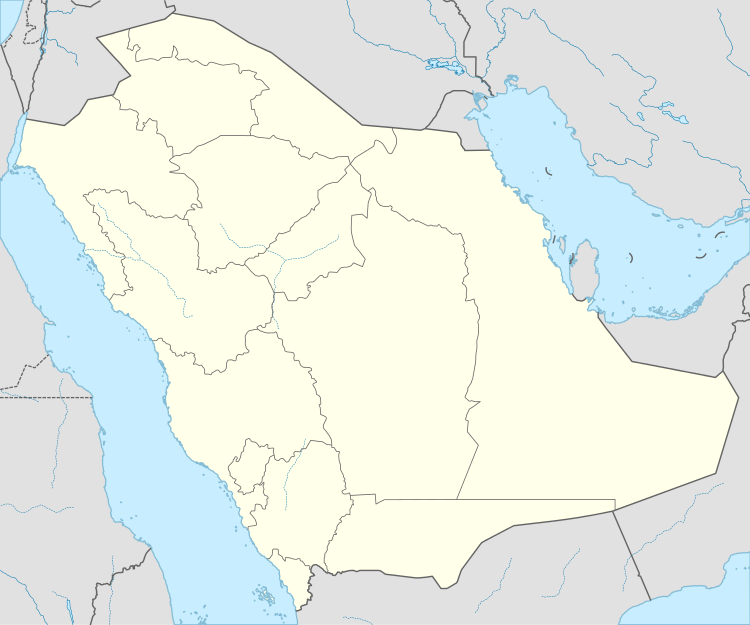Leuke Kome
| Arabic: وادي عينونة | |
 Shown within Saudi Arabia | |
| Alternative name | Wadi Ainounah |
|---|---|
| Location | Saudi Arabia |
| Region | Tabuk Region |
| Coordinates | 28°05′48″N 35°12′11″E / 28.096574°N 35.203094°E |
Leuke Kome (meaning, "white village") was a Nabataean port city located on the Incense Route.[1]
The location currently is called "Wadi Ainounah" (Arabic: وادي عينونة).
History
The port is known from Pliny's Natural History, Ptolemys Geography, and Strabos Geography and Periplus of the Erythraean Sea.[2]
Now to the left of Berenice, sailing for two or three days from Mussel Harbor eastward across the adjacent gulf, there is another harbor and fortified place, which is called White Village, from which there is a road to Petra, which is subject to Malichas, King of the Nabataeans. It holds the position of a market-town for the small vessels sent there from Arabia; and so a centurion is stationed there as a collector of one-fourth of the merchandise imported, with an armed force, as a garrison.[3]
Strabo mentions the village in his account of the failed Roman invasion of Arabia thus:
"After enduring great hardships and distress, he (Aelius Gallus) arrived on the fifteenth day at Leuce-Come, a large mart in the territory of the Nabataeans..."[4]
Leuke Kome was one of the main trading centers on the Red Sea.[5]
Location
Numerous locations for the village have been proposed:
- the most prominent suggestion is at Aynuna, near the entrance to the Gulf of Aqaba, where remains of a Nabataean settlement are documented[6]
- others have favored al-Wajh, 250 km farther south, on topographical and literary grounds.[7]
- the Farasan Islands, off the coast of southern Saudi Arabia, based on the find of two Latin inscriptions documenting Roman military presence in the second century AD
- identification with Myos Hormos, based on the description in Periplus,[8] is now known to be not the case.[9]
See also
References
- ↑ http://nabataea.net/come2.html
- ↑ Gary K. Young, The Customs-Officer at the Nabataean Port of Leuke Kome ("Periplus Maris Erythraei" 19) Zeitschrift für Papyrologie und Epigraphik Bd. 119 (1997), pp. 266-268.
- ↑ The Periplus of the Erythraean Sea 19.
- ↑ Strabo:XVI.iv.24.
- ↑ Dario Nappo, 'On the location of Leuke Kome' Journal of Roman Archaeology vol 23 2010 , pp. 335-348.
- ↑ Ingraham et al. 1981 atlal 5, p. 76–78.
- ↑ Dario Nappo, 'On the location of Leuke Kome' Journal of Roman Archaeology vol 23 2010 , pp. 335-348.
- ↑ Getzel M. Cohen, The Hellenistic Settlements in Europe, the Islands, and Asia Minor (University of California Press, 1995) p 337.
- ↑ Donald Whitcomb, Quseir al-Qadim and the location of Myos Hormos (1996) 6 / Topoi. Orient-Occident 2 pp. 747-772.